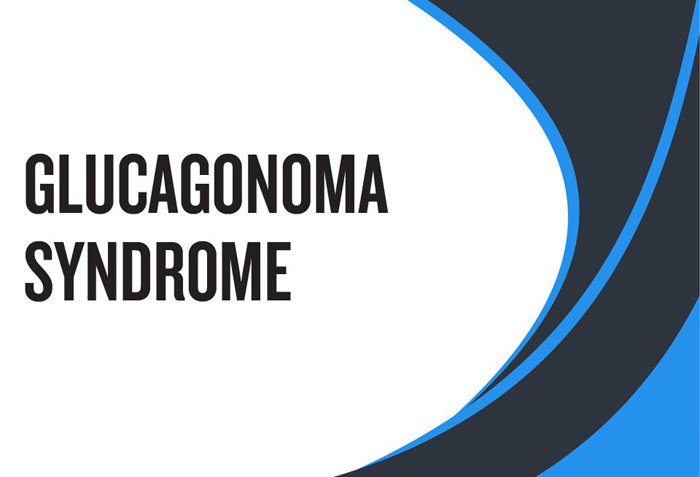
Glucagonoma syndrome is a rare but well-described clinical entity caused by excessive production of glucagon in an α cell tumor of the pancreas, characterized by superficial migratory necrolytic erythema (MNE) with erosions that crust and heal with hyperpigmentation, a beefy-red tongue, and angular cheilitis.
Causes of Glucagonoma Syndrome
Most cases are associated with glucagon production by a pancreatic glucagonoma. Pathogenesis of cutaneous findings is unknown; may be related to nutritional deficiency. Isolated cases have been reported of MNE associated with advanced hepatic cirrhosis and a bronchial carcinoma.
Symptoms of Glucagonoma Syndrome
Necrolytic migratory erythema may affect any site but it most often affects the genital and anal region, the buttocks, groin and lower legs. The rash fluctuates in severity. Initially there is a ring-shaped red area that blisters, erodes and crusts over. It can be quite itchy and painful. As it heals, it may leave behind a brown mark.
It also results in a sore smooth tongue, a sore mouth, cracked dry lips and ridging of the nails.
Diagnosis
Clinical findings confirmed by skin biopsy and serum glucagon levels.
Treatment
MNE Responds poorly to all types of therapy. Some cases have responded partially to zinc replacement. MNE resolves after tumor excision.
Surgery Surgical excision of glucagonoma achieves cure in only 30% of cases because of persistent metastases (usually liver). surgery also reduces tumor masses and associated symptoms.
Chemotherapy Poor response.
References
- https://jmedicalcasereports.biomedcentral.com/articles/10.1186/1752-1947-5-402
- https://www.ncbi.nlm.nih.gov/pmc/articles/PMC4140234/